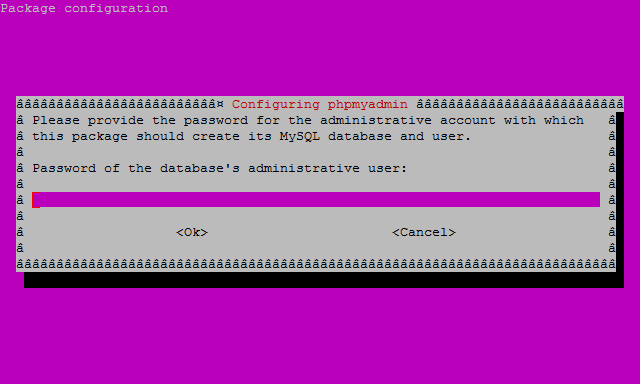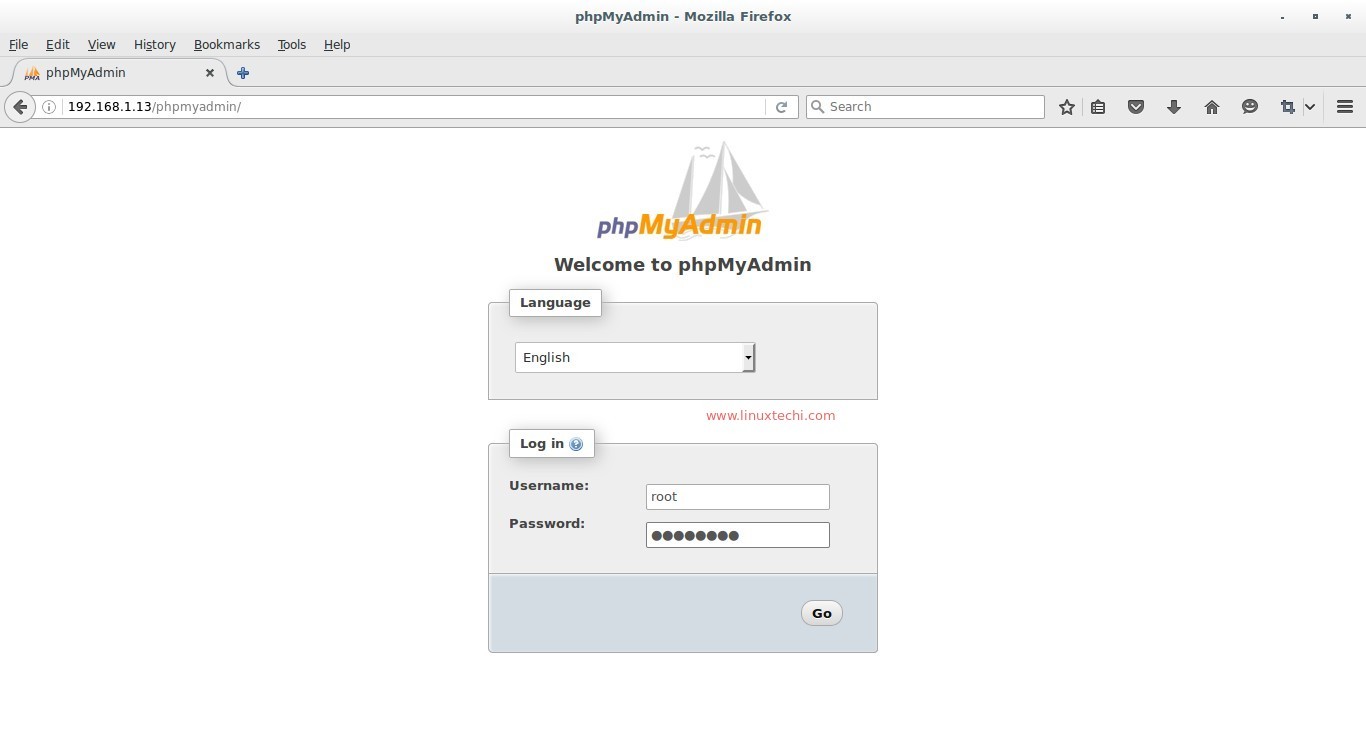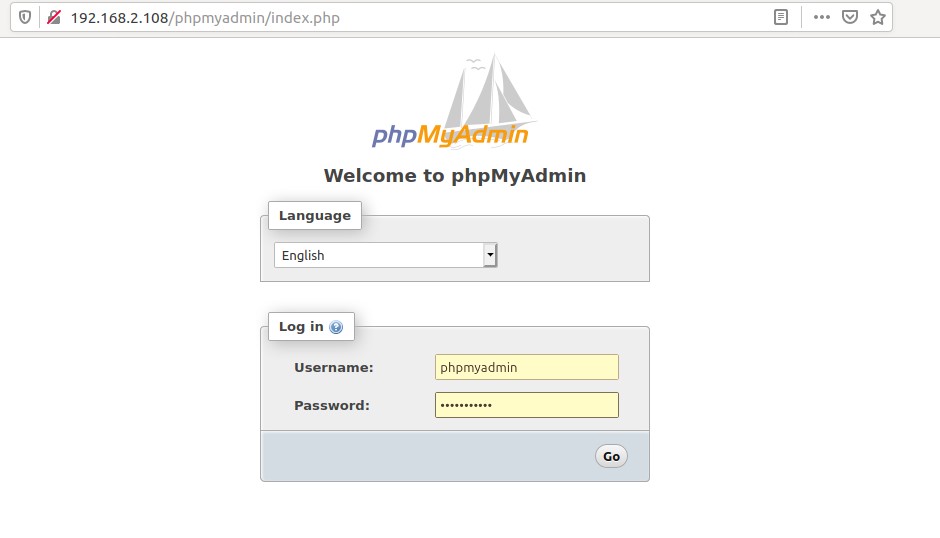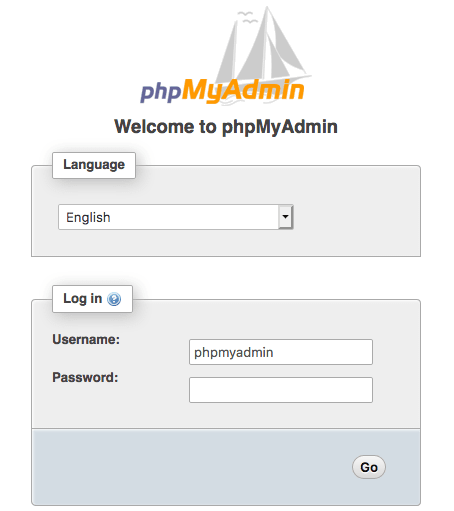
- Install phpmyadmin ubuntu install#
- Install phpmyadmin ubuntu software#
- Install phpmyadmin ubuntu password#
Install phpmyadmin ubuntu password#
You chose /etc/phpmyadmin/.htpasswd as the location for your password file. Save and close the file when you’re finished. Now that you’ve enabled the use of.htaccess files for your application, you’ll need to make one to create security rules in place.Ĭreate the file in PhpMyAdmin folder: $ sudo nano /usr/share/phpmyadmin/.htaccess Open your config file and add AllowOverride All in The next feature we want for our installation was an authentication prompt that a user would have to pass before they could access the phpMyAdmin login screen. Your phpMyAdmin interface, on the other hand, will be available at the new site we chose: Setting up an Authentication to the Web Server : If you go back to the former location of your phpMyAdmin installation, you will get the 404 error. To implement the changes, restart the web service: $ sudo systemctl restart apache2 # Alias /phpmyadmin /usr/share/phpMyAdmin To apply our desired modifications, we should delete or comment out the existing lines and replace them with our own: # Alias /phpMyAdmin /usr/share/phpMyAdmin These two lines are our aliases, which means that whenever we access our site’s domain name or IP address, followed by either /phpMyAdmin or /phpmyadmin, we will be sent the content at /usr/share/phpMyAdmin. Toward the top of the file, you will see two lines that look like this: Alias /phpMyAdmin /usr/share/phpMyAdmin Changing the Application’s Access URL $ sudo nano /etc/apache2/conf-available/nf We have, however, exposed our MySQL system to the outside world by adding a web interface. Step 2: Secure your phpMyAdmin InstanceĪt this point, the phpMyAdmin instance installed on our server should be fully functional. In your web browser, navigate to your server’s domain name or public IP address followed by /phpMyAdmin: Log in to the interface as root or using another username and password. With that, our phpMyAdmin installation is complete. Restart Apache: $ sudo systemctl restart apache2 To finish setting Apache and PHP to interact with phpMyAdmin, the next task in this section of this guide is to explicitly activate the mbstring PHP extension, which you can achieve by typing: $ sudo phpenmod mbstring The installation procedure places the phpMyAdmin Apache configuration file in the /etc/apache2/conf-enabled/ directory, where it is immediately read. On Ubuntu, When requested, you should choose apache2.
Install phpmyadmin ubuntu install#
$ sudo apt update $ sudo apt install phpmyadmin php-mbstring php-zip php-gd php-json php-curl

To begin, we will install PhpMyAdmin from the distro default repository. Once you’ve completed these steps, you’re prepared to start this guide. If you do not already have a domain established with an SSL/TLS certificate, you may use this method to create one, securing Apache with Let’s Encrypt on Ubuntu.
Install phpmyadmin ubuntu software#
You can follow this guide on installing a LAMP stack to set this up.įinally, while utilizing software like PhpMyAdmin, there are essential security issues to be aware of because it:


When prompted to choose the web server, select apache2 and continue.Although many users require a database management system like MySQL’s functionality, they might not feel at ease interacting with the system only through the MySQL command line client. Sudo apt install php7.4 php7.4-common php7.4-mysql php7.4-gmp php7.4-curl php7.4-intl php7.4-mbstring php7.4-xmlrpc php7.4-gd php7.4-xml php7.4-cli php7.4-zip

If you've just installed MariaDB, and haven't set the root password yet, you should just press enter here.Įnter current password for root (enter for none): PRESS ENTER Install phpMyAdmin & Linux, Apache, MySQL/MariaDB & PHP on Ubuntu 20.04 desktop.īelow you will find the instructions that I myself have tried and successfully implemented on my system.Īfter that, run the commands below to secure the MariaDB server by creating a root password, disallowing remote root access removing anonymous, and more.


 0 kommentar(er)
0 kommentar(er)
